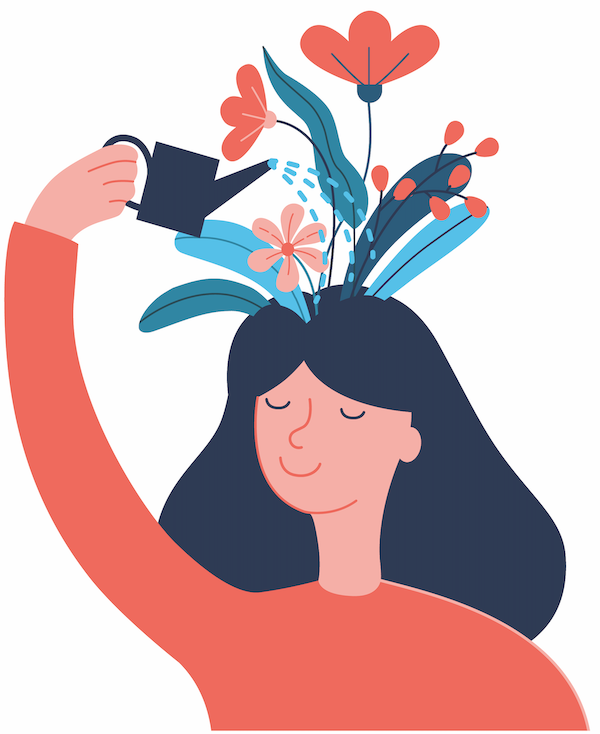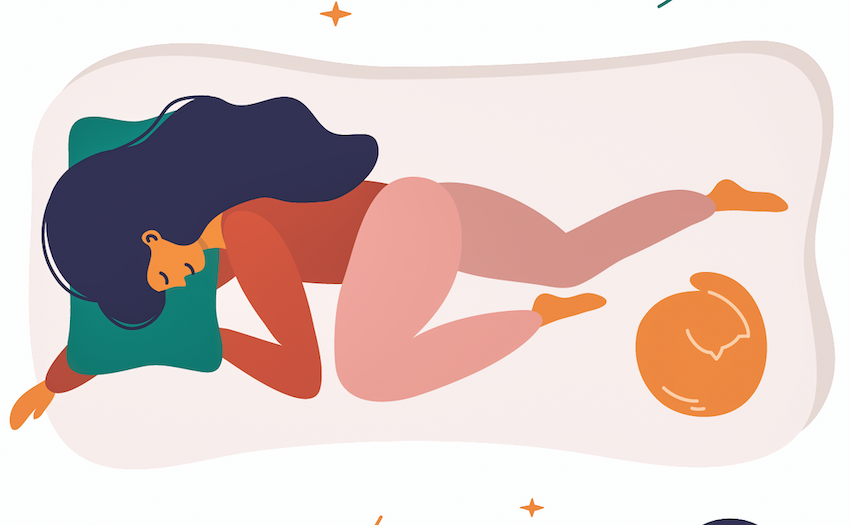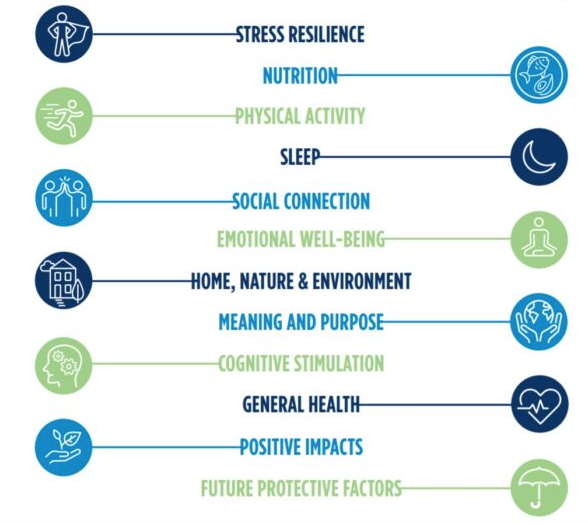Staying healthy goes far beyond opting to take the stairs or eating our veggies. Aside from getting exercise and a well-balanced diet, which are certainly important medicines for the brain too, SRQ teams up with the brains behind The Brain Health Initiative (BHI) to explore less obvious areas of focus to boost the mental and physical state of our central organ, this New Year and beyond.
Born from the global brain health crisis that challenges many people today, BHI brings opportunity and hope by revolutionizing neuroscience and pioneering work. Tapping into community engagement and accelerating research, BHI is growing into an emblematic roadmap to engage and empower people to make more brain healthy lifestyle choices. “The first component of the Brain Health Initiative is really about raising awareness to create a brain-healthy community,” says Founder, Executive Director and Neuropsychologist Dr. Stephanie Peabody, PSYD, HSPP. “And in order to do that, we have to help the residents—families, students and workforce—begin to speak a common language, use a common lens, share a common understanding and set common goals.” Headquartered in Lakewood Ranch, Dr. Peabody’s team—founded in a collaborative effort with Massachusetts General Hospital (MGH), a Harvard Medical School Teaching Hospital and the Academcy for Brain Health and Performance, recognized the dire nature of combating isolated strains and stressors through extensive research and discoveries. BHI has since garnered local and national attention by cultivating 12 Brain Health Pillars as synergistic protective factors crucial to accelerating brain health for performance optimization, as well as reducing risk factors for brain illness, while supporting early identification, and innovative symptom and recovery intervention.
But the brain is a vast and complicated organ. Which means BHI’s job is only just the beginning. Throughout the pandemic’s peak, and still today, the Initiative continues to pump up their efforts of education and awareness, as well as find progressive solutions to minimize external and internal risk factors, in order to further create a culture of brain healthy communities—especially ours. So we, as a whole, can optimize performance longevity of all ages while preventing/fighting brain illness across the lifespan of the Suncoast region. To celebrate a clean slate and neuro-healthy new year, Dr. Peabody was instrumental in connecting us with her BHI affiliate neuro-savvy network—including clinicians, researchers, academics and innovators from across the U.S. Together, we honed in on five of the Brain Health Pillars; five key components we feel are attainable, and imperative, in keeping us at the top of our game for not only 2022, but the rest of our years. Facials and pedicures are great, but it’s time for some real self-care.
The Power of Positivity
Expert: Dr. Shelley H. Carson, PhD

Positive neuroplasty is the act of rewiring the brain to attend to more positive, rather than negative, stimuli. It has the great benefit of increasing positive thoughts and emotions and generally promoting well-being. This is important for individuals because it helps us stay happy and resilient. But it’s also good for communities! Positivity activates the approach system in our brains, whereas focusing on the negative activates the avoidance system. When we’re in avoidance mode, we shut down and focus on personal protection. This is basically what was happening during the pandemic lockdowns. However, when we’re in approach mode, we’re interacting with our environment and moving forward. This is where all human progress and innovation takes place. If a community is full of individuals building positive neuroplasty, that community will be forward-thinking, open and innovative. We can all contribute to our community’s positive growth by generating more personal positive growth in the coming year.— S.H.Carson, MD, PhD Researcher + Instructor, Department of Psychology at Harvard University; Founding Scientist/Scholar of BHI
Here are a few tips from Dr. Carson to boost that feel-good serotonin in your brain and increase your overall positive neuroplasty:- Improve and savor even minor social interactions. With each person you encounter, take three seconds ahead of time to say to yourself: ‘Here’s a fellow human being whom I genuinely care about.’ Then be really present with that person and spend a few seconds after the experience processing it.
- Notice and savor things in your environment (new palm trees or flowers planted in the median strips of the roads, your neighbor’s garden, the sun glinting off the water, a colorful sunset). Take delight and build new positive neural pathways for the things we so often take for granted.
- Whenever you’re outside doing an activity—even if it’s a chore—stop for a moment and enjoy just being out of doors. Remember the days not so long ago when we were forced to be inside most of the time because of the pandemic. When you’re outside, think about what you can see, smell and hear. Being outside, even if it’s raining, can be a joyful experience!
- Enjoy looking at the faces of your fellow humans when you’re out and about. We pass by each other without a thought, without remembering that each person has a history and a story. Take time to enjoy the camaraderie of the human experience and throw a smile someone’s way!
Enhancing Cognitive Stimulation
Expert: Michael Merzenich, PhD

Your brain is begging you to engage (or perhaps in a somewhat tired or dispirited life, RE-engage), in a lively way with the world around you. Your neurological health and the functional capabilities of this most precious of organs are dependent on continuous cognitive engagement driving continuous regenerative and strengthening neurological change. Get lively and STAY lively! Since we’re all endowed with the ability to improve ourselves (our brain and its function) all across the span of our lives, why on earth wouldn’t you take full advantage of this precious gift. — M.Merzenich, PhD Professor Emeritus, UCSF; Chief Scientific Officer, Posit Science; Founder & President, Brain Plasticity Institute; Senior Scientific Advisor, Brain Health Initiative
Keep the brain juices flowing with these intuitive tips from Dr. Merzenich to enable, and enhance, your cognitive stimulation:- Amplifying the processes that increase your alertness and brightness is a primary goal of Posit Science’s BrainHQ programs. Scientific studies have shown that specific exercise can restore your attentiveness to a lively ‘youthful’ level, can help bring you out of a funk (if you are in one), and improves your rates of learning new skills or abilities.
- Most older folks spend much of their time sleepwalking through life. Be like a child again. Recover your childlike sense of wonder about the world out there. There are wonders out there everywhere, if you just look for them.
- Acquire new skills and abilities that, by their nature, speed up your neurological processes. Faster brains are healthier brains. Progressive fast-responding games or forms of exercise (ping-pong, pickleball, handball, dancing, et alia) are great for your brain. Note to reader: This is only the case if you work to progressively improve your abilities at these activities.
- The machinery of your brain that controls its plasticity supports your positive good spirits, increases your attentiveness and liveliness. It needs exercise. Again, you can get some of that exercise by going to the ‘brain gym’ (BrainHQ). You can also exercise it by adopting a life strategy of continuous new skill acquisition. In my case,
- I am continually working to master new practical abilities (outdoors in the mountains or at the beach or riverside, in my workshop and ‘art studio’, in our cultural and
- social life, in the garden and orchard and kitchen, in community service). All that new skill acquisition directly engages the machinery that keeps me—and will help keep you—lively and alive.
- Be kind and generous in life. Every act of giving, of kindness, of sympathy exercises the machinery in the brain that controls your positive good spirits. Regular exercise of this crucial brain machinery grows its powers. Being a ‘good soul is very good for your brain.
- Healthy brains are usually possessed by people who have healthy bodies. That is not an accident. The brain regulates innumerable processes in the body that contribute to your physical health and longevity. At the same time, control of your physical actions is (of course) one of the most important enterprises—and forms of ‘exercise’ —for the brain itself. To the extent that it is possible, keep them both healthy and in action, together.
Opting To Be Outdoors
Expert: Jennifer Walsh

Our bodies and our brains crave being in natural elements because we came from the natural world. The more technology we have, the more nature we need for our brain and body to be healthy. I want to change the way we look at nature by having more of our conversations in nature. — J.Walsh Beauty Bar Founder; Wellness & Nature Expert; Journalist & Podcaster; Advisor, Brain Health Initiative
We live within walls so much already—take every opportunity to spend more time outdoors. Here’s a few tips from Walsh to get out there and open our eyes to the outside:- I always suggest a ‘wellness walk’ for optimal health and wellbeing and to decrease risks of brain illness. This walk is not about getting from point A to point B in a specific amount of time, it is more of a walking mindful meditation. If you can’t get to a local park or beach, a simple walk on your block is also okay, just no headphones for this walk. This walk is allowing your body to truly activate the senses. This walk can last 15-20 minutes and can be done any time of day, even if you feel stuck on a project for work.
- Be present enough to smell what is around you, to hear the sounds, really look at nature in your own backyard and neighborhood. Is the air fragrant enough for you to almost taste? Don’t forget to touch the trees, plants, etc. Don’t be afraid to get your hands dirty. Are you noticing something you may have never seen before? Allow yourself to feel the breeze or the sunshine on your skin, how does that make you feel?
- Every once in a while, pop out of your chair and off of your computer and give yourself (and your brain) some fresh air. We become more creative when we spend time outside. Want to make this into more of a great habit? Grab a little one, a family member, a neighbor or coworker and set up a weekly time to meet up for a stroll.
Cultivating New Habits, Reaching Goals
Experts: Christopher Bray, PhD and Gale Bray

The Brain loves to create habits so you don’t have to use up energy with thinking (driving the same way to work, drinking the same soda, going to the same restaurants, etc.). If you aren’t reaching your goals, make them smaller. The secret to reaching goals is taking small steps every day. Small successes every day lead to big changes over time. The small steps you take daily create new neural networks in your brain that, over time, become strong habits. Oh, and, your brain doesn’t know the difference between a good habit and a bad habit, so choose wisely the habits you want. —Dr. Bray, PhD Cognitive-Behavioral Researcher, speaker and CEO of the Adaption Institute; Advisor, Brain Health Initiative
Habits set a course for our lives. It is not just a repeated behavior, a habit is a tether to our life goals. Do not beat yourself up when you are not perfect at creating your habit. A missed day is not a failure. Keep on the course even when you’re not perfect and the habit will eventually be formed through consistency. — Gale Bray Teaching Assistant, Harvard; keynote speaker, facilitator and BHI faculty advisor.
The Brays share their intel to finally make (and stick to) that habit you’ve been kicking yourself to get in the groove of every New Year:- The creation and formation of a habit occurs through the ABC (Anchor, Behavior, Celebrate) method:
- ‘Anchor’ the habit to an existing routine. The new behavior will be linked to a current strong habit to create an extrinsic prompt to serve as a reminder to begin the new habit. Example: If I want to build a habit of starting my day with one minute of deep breathing, anchors could be when I get in my car and put my key in the ignition of the car, I will stop for one minute and practice my deep breathing, or when I make my morning cup of coffee.
- ‘Behavior’ is the simple first step of a new habit. Create the smallest action possible that you can complete in less than 30 seconds. Example: If you want to walk 15 minutes a day to build resilience, the smallest action would be to put on your running shoes. (That’s it!) After a few days, you would then move the smallest action to “walk out the door and take ten steps.”
- ‘Celebrate’ and create a positive emotion when you complete the micro habit. Celebration creates positive affective emotions which creates self-efficacy and the belief that the behavior can change.
- Keep your habits small (Also known as ‘micro-try’s’). Micro-try’s are quick to create lasting behavior change. Attainable habits can be completed daily and take little time and cognitive function. The ease of the micro-try builds changes over time, reduces pressure for perfection and eliminates the emotional risk of failure. Plus, small amounts of motivation and willpower are needed due to the limited effort required for a micro-try. Micro-try’s should be small and easy to quickly complete, thus reducing the expectation of time, effort and motivation needed to complete the behavior. Big goals get the brain excited and engages with the thought of large rewards, but this is unsustainable and becomes a prescription for self-criticism and disappointment. Individuals desiring change often initially push themselves beyond physical, emotional or mental capabilities (think of the workout regimen that you start upevery January!). This might be sustainable for a short time, but humans don’t do things that are painful for very long. Small is usually not considered significant but has a higher rate of long-term success and sustainability.
How Much Sleep Is Enough?
Expert: Michael J. Breus, PhD

Sure, getting a full eight hours of sleep is great, but sometimes not always feasible, or needed. I get a consistent six hours and 15 minutes every night. I go to bed very consistently at midnight and wake up at 6:15 naturally, and I feel good. Determine your own ideal bedtime, create a personalized pre-bed routine, develop strategies to avoid waking up in the night, and how to wake up feeling refreshed and ready to take on the day. Everything we do, we do better with a good night’s sleep. The basics of brain health all seem to underpin sleep deprivation. It affects every organ system, every disease state, cancer cells even multiply faster the more sleep deprived you are. People are always like, ‘I’ll sleep when I’m dead.’ But REM sleep is when we move information from our short term memory to our long term memory bank. So when you’re not getting enough REM sleep, that is going to have a dramatic effect on your memory. For a lot of people in this community being an older demographic, one of the first things they’re thinking about is loss of memory. They think, ‘Oh, my memory’s going—must mean I’m getting old.’ Honestly, in a lot of cases, just get some sleep. You may be really surprised at how that has a major effect on you. — M.Breus, PhD Clinical Psychologist; Diplomate of the American Board of Sleep Medicine; Fellow of The American Academy of Sleep Medicine; Advisor and Faculty, Brain Health Initiative
Dr. Breus lays out the best bets for getting your best night’s slumber on a more consistent basis and without interruption:- Give yourself an electronic curfew of 90 minute prior to lights out: This means a media diet before bed (you need time to relax and destress). Remove blue light by wearing blue light blocking glasses, it will help you wind down before bed and help your body produce melatonin on the proper schedule.
- Consider meditation or progressive relaxation before bed or while falling asleep.
- Compile a gratitude list in your mind (while lying in bed, in the dark): Many people think stressful thoughts as they fall asleep (which makes sense, it’s the first time all day you get to think by yourself), but that causes increases in our fight or flight hormones. Thinking less stressful or positive thoughts can help reduce stressful feelings and help with sleep (improves deep sleep and encourages more positive dreams).
- Keep your schedule consistent: The more consistent your wake-up time, the more consistent your overall body function. Avoid extra napping if you are homebound, it will only disrupt your nighttime sleep.
- Lower stimulants and depressants (e.g., caffeine and alcohol). If you are already stressed out, adding caffeine to the mix is not a great idea, it will only increase the unwanted side effects. Alcohol, while making you feel sleepy, does not allow for quality rest, which in turn will make you feel even more stressed if you have a hangover the next day. It also makes you less able to fight a virus.
- Take a hot shower or bath 90 minutes before bed: Wash off all those germs and increase your core body temperature. Your body temperature will decrease once you get out of the tub and help produce melatonin naturally.
- Make sure your environment is clean: If possible, use HEPA filtration for your bedroom air. Wash sheets 2x a week (in hot water), try to do an overall deep cleaning of your bedroom, you will be spending a lot of time there.
- Understand that sleep is healing. When you sleep, you heal. When we’re not getting good quantity or good quality—and that can be for a whole host of reasons: environmental, medical, medication, alcohol, caffeine or what have you—everything slows down, almost immediately. We see cognitive decline, emotional dysregulation and memory deficits. The goal is to get people to get good, quality sleep, enough of it, and still enjoy your life.









